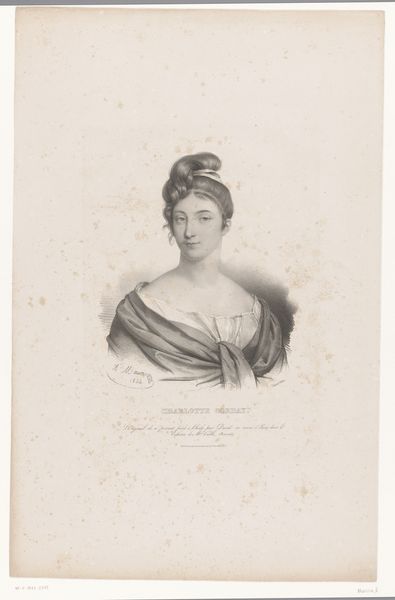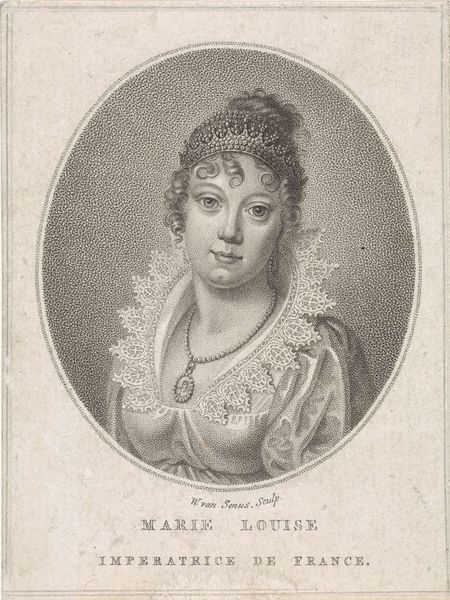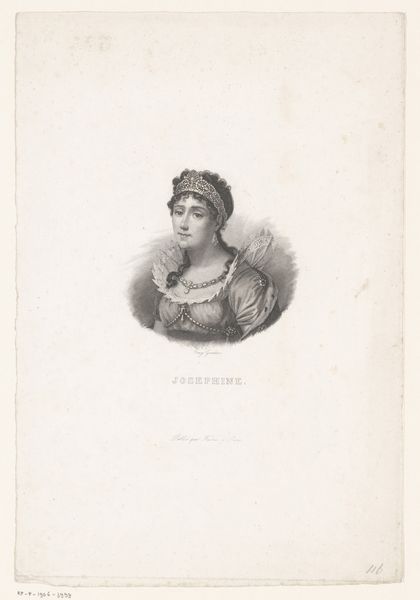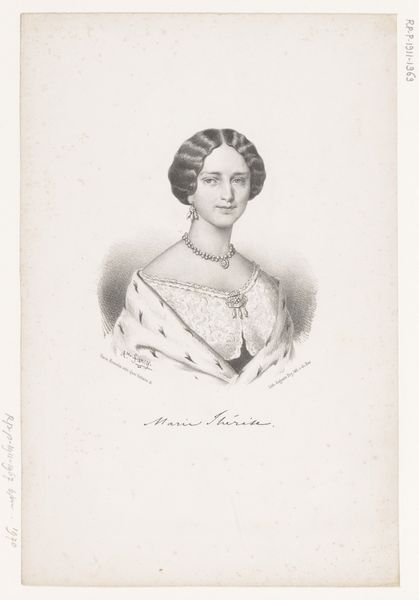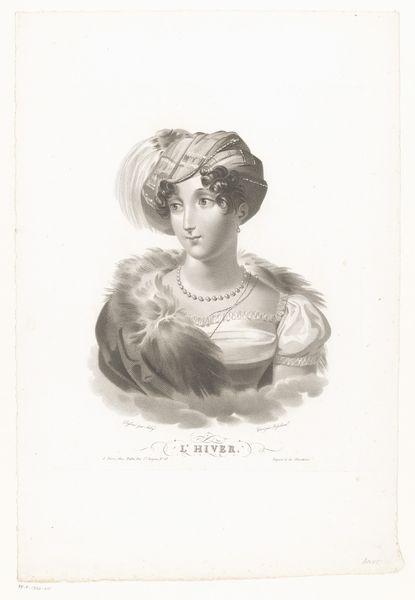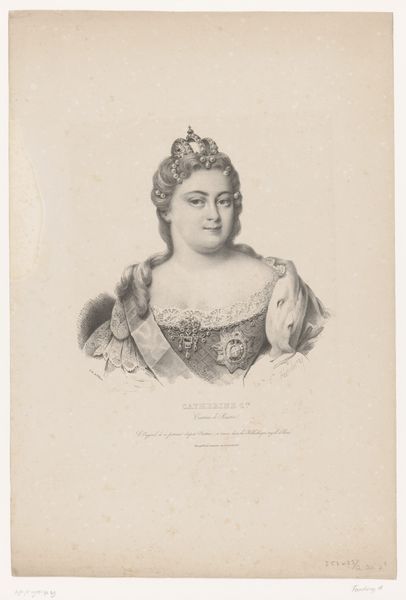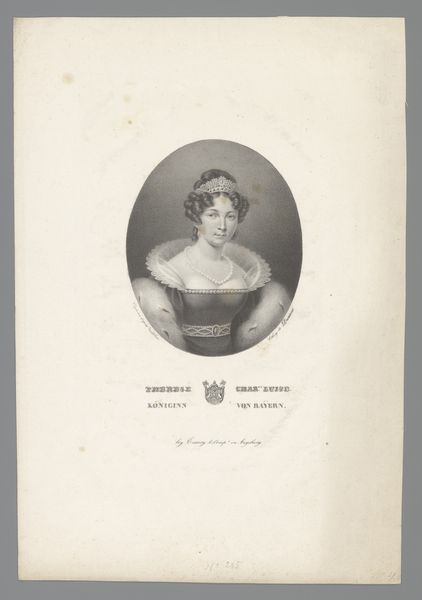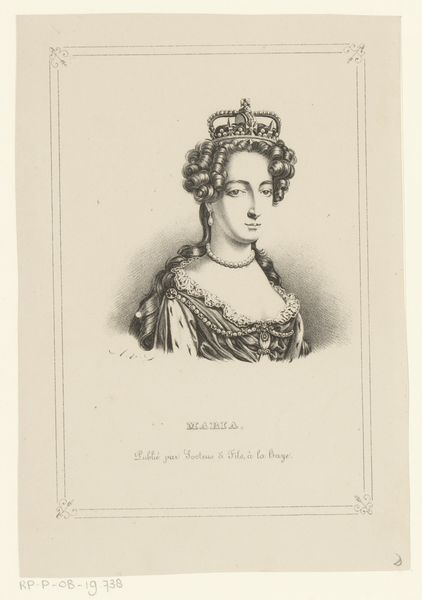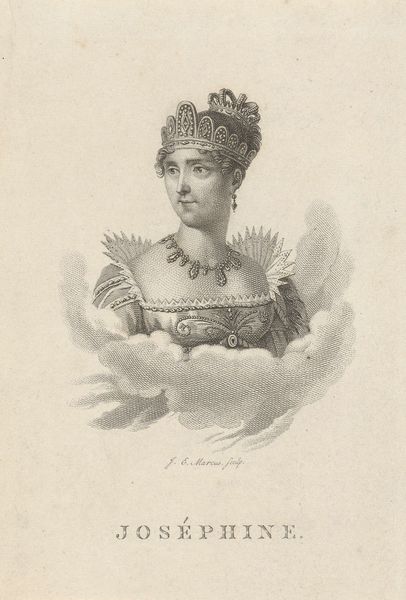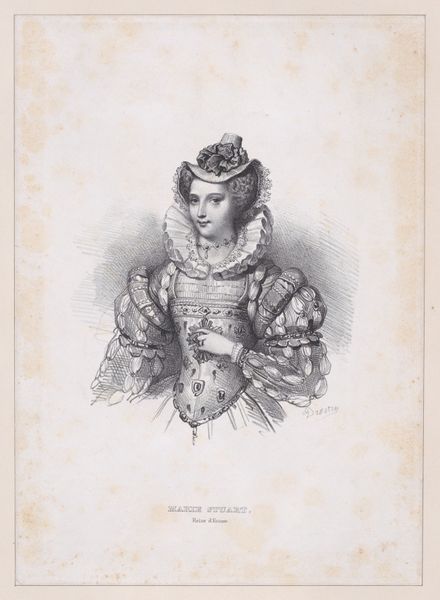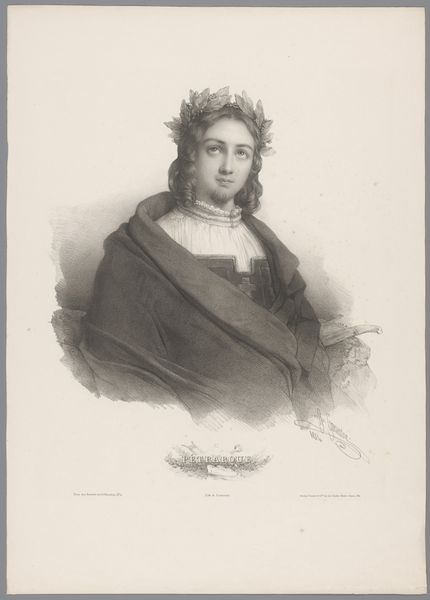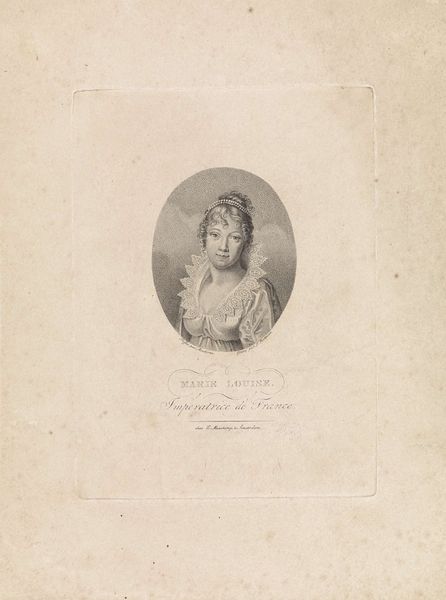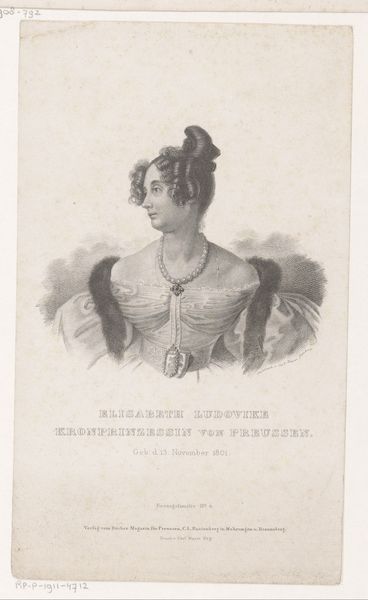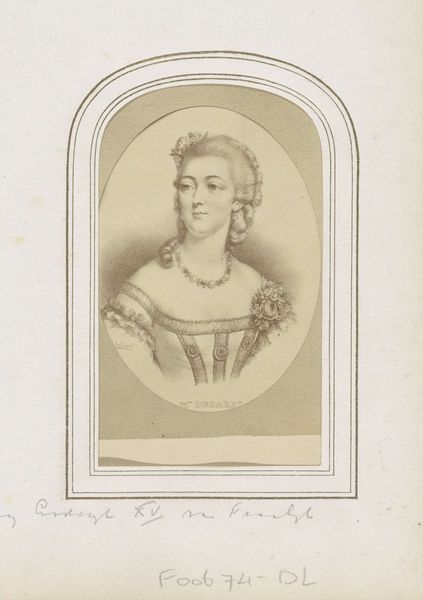
print, engraving
#
portrait
# print
#
romanticism
#
history-painting
#
academic-art
#
engraving
Dimensions: height 218 mm, width 142 mm
Copyright: Rijks Museum: Open Domain
Curator: Jacob Ernst Marcus created this engraving, "Portret van Clarisse Enjalran Manson," in 1818. It's currently held at the Rijksmuseum. Editor: The fineness of the lines! It's breathtaking in its subtlety. And there's a certain cool elegance, almost austere. Curator: It certainly reflects a societal push toward refinement. Engravings such as this gained popularity partly from their affordability, bringing portraits to a broader audience during the Romantic period. They reinforced status but also helped democratize image ownership. Editor: I’m struck by how the gaze directs us, angled just to the left, suggestive yet contained. The meticulous hatching, almost mathematical in its precision, models the face with restrained emotion. Even the frilled collar seems strategically placed to frame and soften her neck. Curator: It is a fascinating tension—Marcus renders a particular subject while upholding and transmitting the era’s beauty standards. Women of the time had tremendous social pressure to perform a certain standard, and images such as these both reflected and influenced this demand. Clarisse Enjalran Manson would’ve certainly been a member of the bourgeois social class. Editor: Look how the light catches the curls near her face, directing focus immediately to the eye. Note also the contrast generated by the sharp frills along the ruffled collar versus the flat plane of her skin—subtle brilliance in design. Curator: Portraits of women like this played an essential role in cementing bourgeois respectability in post-Napoleonic Europe. They offered more than just a likeness, but models for comportment. Editor: Thinking of the details really focuses how it all blends together as a unified whole. It is a beautifully controlled, serene image, rendered with tremendous skill and sophistication. Curator: I see in it a compelling blend of social positioning and artistic choices reflecting post-revolutionary French society. The work tells an intricate story about class, gender, and art’s role.
Comments
No comments
Be the first to comment and join the conversation on the ultimate creative platform.
